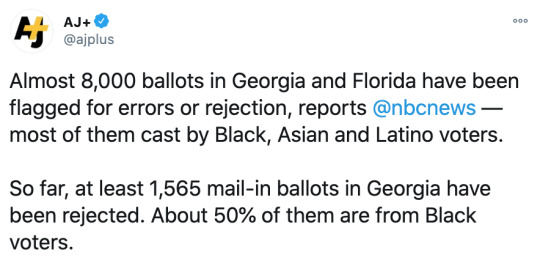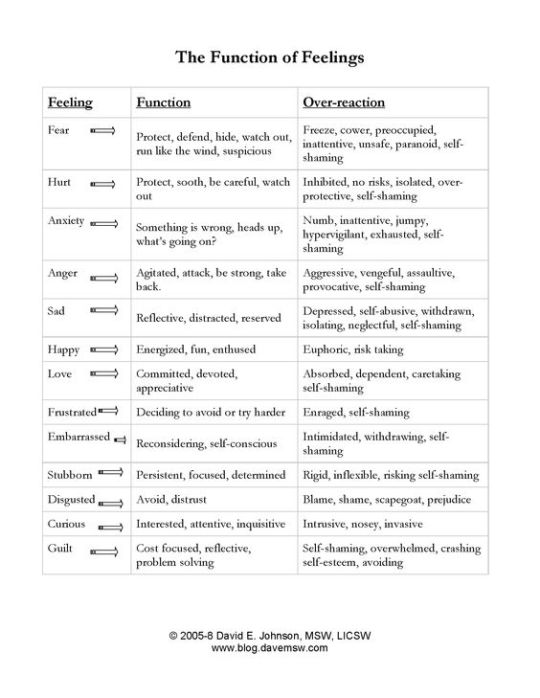Text
On December 10, 2020, Brandon Bernard is scheduled to be executed by the federal government for a crime he committed when he was 18 years old. He has spent 21 years on death row. Five out of the nine surviving jurors that found him guilty and one of his prosecutors no longer agree with his sentence. Please spread his story on social media, email President Trump, and call the Justice Department to ask them to commute his sentence to life without parole. Brandon Bernard’s crime is incompatible with his punishment and we cannot allow the federal government to follow through with this.
Please click the source link to be taken to his website, which details his life in prison and ways you can advocate for him. In the replies are a page with specific actions we can take to help his case and an Instagram post to share.
37K notes
·
View notes
Text
can we all agree that pressing foreheads together is an underrated act of affection??
297K notes
·
View notes
Text
writing is simple. i put my characters into a situation that i, the author, cannot figure out how to get them out of and i close the document
#HTKGDSAKFNJH#problem solving is the part of writing i hate the most probably#IF I WANTED TO SOLVE PROBLEMS ID DO MATH
72K notes
·
View notes
Text
Help a poor bi black bitch pay $867 in rent by Nov. 10
Hey y’all, my original post has a lot of nots but I’ve been stuck at $86 in donations when i need 10x that for rent. On top of that I have credit card, utilities and my phone bill too. My bank account is literally at $2.15 and I’ve been crying so hard bc these last few months have been so ugly to me (father’s deat, out of a relationship, coming out as bi, job not b4 years disregarding safety practices re: COVID)

I would like to gift a painting via raffle to a random donor once i raise the money to show my thanks and that post is here/all the info regarding the raffle.
But rn I really need to get rent handled and I’m in such an uncomfortable space financially rn as is everyone but i can use and am thankful for all the help i can get. Pls boost if you cannot donate
Venmo
PayPal
Cash App
Pls <3
86/$867
1K notes
·
View notes
Text

21K notes
·
View notes
Note
What are the pros and cons of starting a novel with the inciting incident. As in first sentence on the first page? Is this something that should be done?
Beginning with the Inciting Incident
There’s a lot of conflicting information out there about beginning your story with the inciting incident. Everyone has their own ideas about proper storytelling, but conventional wisdom (based on modern trends in popular novels) does not favor beginning with the inciting incident.
Pros of Beginning with the Inciting Incident
The main reason people seem to think this is a good idea is because it’s exciting. However, there are many other exciting ways to begin a story without cutting out all the important development that needs to come before the inciting incident. I also believe this logic is a misinterpretation of “begin in the middle of the action,” which doesn’t actually mean “start with the inciting incident” but rather, start when something interesting is happening.
Cons of Beginning with the Inciting Incident
The inciting incident is the moment when your protagonist’s world is flipped upside down. That could mean they’re fired from their job, they meet a love interest, an alien invasion begins, they are turned into a vampire, or they decide they’re going to get laid before graduation. From that moment on, every action they take will be in service of reaching the goal they formulate as a result of the inciting incident.
The major drawback to beginning with the inciting incident is that if your reader has no idea who your protagonist is, why they should care about them, and what their normal life is like, why in the world should they care when their life is turned upside down? Imagine if The Hunger Games began like this:
Effie Trinket crosses to the glass ball with the girls’ names, reaches in, and pulls out a slip of paper. The crowd draws in a collective breath and then you can hear a pin drop, and I’m feeling nauseous and so desperately hoping that it’s not me, that it’s not me, that it’s not me.
Crossing back to the podium, Effie Trinket smooths the slip of paper and reads out the name in a clear voice. And it’s not me.
It’s Primrose Everdeen
Imagine how confused you would have been if you’d read THG and that’s how it began. Whose POV are we in? Who is the “me” in this scenario? Who is Effie Trinket and why are girls’ names written on slips of paper inside a glass ball? What is this drawing even for and why is the thought of being chosen nauseating for this “me” person? Who is Primrose Everdeen?
We don’t know--so how can we possibly care?
In fact, The Hunger Games actually begins about 18 pages before this scene, that morning, when Katniss (the “me” person) wakes up, next to her little sister (Prim), and gets ready to go hunting with her friend, Gale. As Katniss gets ready and walks through her town to meet her friend, we learn all about her, her family, her everyday life, her nation, the Reaping for the upcoming Hunger Games, etc. All of the details are laid down so that we understand who Katniss is, what she wants, what her biggest fears are, and what her world is like--all of which is important for us to understand why Prim’s name being chosen out of that glass bowl is the worst possible thing that could happen to her.
Bottom Line on Starting with the Inciting Incident
If you have a way to introduce your protagonist, who they are, what they want, and make the reader understand why the inciting incident has turned their normal life upside down, all you can do is try it and see if it works. But for most stories, you’ll want to back up a bit and spend at least a single scene getting those details set up. Even if you end the first scene with the inciting incident, that’s still pretty close to the beginning of the story.
Most story structure guides place the inciting incident between the 5% and 15% mark of the story.
Ultimately, you have to place it where it works best for your individual story. If it genuinely works best to place it at the beginning, go for it. Just make sure you’ve got some way to make up for all that missing context. :)
————————————————————————————————-
Have a question? My inbox is always open, but make sure to check my FAQ and post master lists first to see if I’ve already answered a similar question. :)
71 notes
·
View notes
Text
writeblr do this its super fun!!!!
tell me who from your wip is going to super hell
204 notes
·
View notes
Text
It’s very sad to hear “oh, well, most people don’t even win NaNo, so… (it’s bad, it’s unhelpful, it’s stressful, it’s impossible, it’s Inherently Something Negative.)” It comes so often from people who genuinely believe that NaNo will never work for them– and if you don’t like time constraints, or word counts, or specific goals, that is absolutely fine. NaNo is stressful for lots of people, and it’s fine to not participate.
On the other hand, ‘winning’ NaNo is often misunderstood as some kind of binary. As if not officially ‘winning’ (getting 50k in a month and validating on the site) means you failed and may as well not have bothered. Chris Baty is probably rolling in his very-much-alive-but-you-understand-the-metaphor as I write this.
The point of NaNo is to encourage you to reach impossible heights, yes. It’s wonderful to reach 50k. And there are reasons for that number and for the month chosen and for the time constraint used.
But writing fewer words is not a ‘waste’. It’s not a negative. In no way did you ‘lose’ or ‘fail’ NaNo as a result, and it would be ridiculous to claim that. I have yet to see NaNofolk claim there is a way to ‘lose’ NaNo. There isn’t one. If you wrote 30,000 words, that’s good. If you wrote 1,000 words, that’s good. If you outlined a bit, then realized this wasn’t working for you and moved to January, that’s fantastic. You worked on your novel. And that’s the point of NaNo: to get something done.
The fact that people don’t win NaNo most of the time doesn’t really strike me as a bad thing, for that reason– how many people sign up each year aiming for different goals? So many NaNo Rebels, so many people ready to write some difficult-to-measure content or stick to a smaller goal for their own reasons. You will never find a decent person getting down on someone for choosing to aim for a different goal on the site– the forums have explicit rules against judging anyone else’s method of approaching NaNo. I wonder if the people who hate NaNo so thoroughly know that– that they could get on the site, say “this month I am working the same as I do every month; with no constraints and no specific goals” and people would applaud them.
We spend so much time here talking about how art as a whole is not a ‘win/lose’ thing. There is no such thing as a creative failure– the sketch you didn’t finish, the piece of writing with no plot structure, the piano piece you can’t seem to play on key. You’re always learning. You’re making progress. There’s no reason to feel bad just because you didn’t reach your ultimate goal– and there’s nor reason to get down, on yourself or others, because of a perception of how a frivolous writing challenge functions.
1K notes
·
View notes
Text
crossing my fingers and manifesting blue georgia
42 notes
·
View notes
Text
8K notes
·
View notes
Text
How I turned an idea into an outline
With NaNoWriMo around the corner, I thought I might show you how I plotted my novel.
This is the story structure I used:
0% inciting incident
0%-20% introduction in the world, ends with a point of no return
20% first plot point: the hero receives his marching orders
20%-50% response to the first plot point
35% first pinch point: reminder of the nature of the antagonistic force
50% midpoint: big fat plot twist that changes the hero’s AND reader’s experience
50%-80% attack: the stakes are higher now
65% second pinch point: again reminding the reader of the antagonistic forces at hand
80% second plot point: the final injection of new information into the story to give the hero everything she needs to become the primary catalyst in the story’s conclusion (no new information past this point)
80%-100% resolution + final conflict + return home

I didn’t make this up. I think it’s by Larry Brooks, if The Internet informs me correctly. Fun Fact: once you pay attention to it, you’ll see this structure everywhere. Just take a look at any Harry Potter book, for example.
These points are the “bones” of my story. Next, I decided what “flesh” to put on them.
I simply made a list of things I like to read about:
Books about books and libraries
Magic
Quirky characters
Intelligent, fast-paced and sometimes silly
So, I combined this list and the structure points into a story that makes sense. Because I don’t want to spoil my plot / I am still to shy about my wip, I will make up a new plot for this post, so I can show you.
0%: The hero does something magical without knowing how she did it. She discards it, because everybody knows it can’t have been real.
0%-20%: We see the daily life of the hero: she is unhappy because all she wants to do is read, but she is not allowed to. She reads in the dead of night and is punished for it by her evil stepcousin. She finds a book on magic.
20% It all clicks together: she can do magic!
20%-50% The daily life for the hero changes. Instead of reading all night, she practices magic. She now loves books even more. She has little victories over her evil stepcousin, but hasn’t won yet.
35% The evil stepcousin finds out that she can do magic and takes away the magic book.
50% She discovers she can do magic without the book.
50%-80% The hero is not the only one who is bullied by the evil stepcousin. Her younger cousin is a victim as well, and he doesn’t have magic to defend himself. The stakes are raised, this is bigger than herself now. The younger cousin also wants to read, so they have several bonding moments over reading.
65% The evil stepcousin hurts the younger cousin, he’s in a coma now.
80% The hero discovers the evil stepcousin could do all these evil things because he knows magic too.
80%-100% The hero confronts the evil stepcousin, fights him off, nearly loses but wins in the end. He gives up and releases his power over the younger cousin who wakes up from the coma.
It’s not the most genius plot ever, but I literally made this up in minutes. So can you! And imagine the genius plot you can come up with if you spend more than a few minutes on it.
Then I calculated how many scenes I need in which part of the story. My wip is a YA or 12+ book, so I want it to contain about 75,000 words in total. I want my scenes to be around 1,000 words long to keep it snappy, so I need 75 scenes.
Scene number 1 (0%) is the inciting incident, scene number 15 (20%) is the first plot point, scene number 26 (35%) is the first pinch point, scene number 37 (50%) is the midpoint, scene number 49 (65%) is the second pinch point, scene number 60 (80%) is the second plot point and scene 75 (100%) is the last scene.
Some sidenotes on the 1,000-word scenes:
That’s more of a vague rule of thumb than a strict rule. If your scene needs to be longer or shorter, make it longer or shorter of course. My wip has some 2,300-word scenes as well.
Having 1,000-word scenes does not mean I have 1,000-word chapters, that would be really short. I will divide my novel into chapters after I’m finished writing my first draft.
For NaNoWriMo, maybe you could write scenes of 1,667 words, so you do one scene per day. A 50,000-word novel has 30 scenes of 1,667 words. Inciting incident is at scene 1, first plot point at scene 6, first pinch point at scene 11, midpoint at scene 15, second pinch point at scene 20, second plot point at scene 24 and scene 30 is your last scene. That’s just an idea, you got to see what works for you.
Then I made up in one sentence what will happen in every scene. For example: “They meet the dragon and he sends them on a sidequest.” Now my outline consists of 75 one-sentence scenes. This way, I prevent the problem of the sagging middle and other pacing problems and I still get to surprise myself when writing.
From those one-sentence scenes, I flesh out every scene into a first draft, using the process I described in my post How I never have to face an empty page when I write.
And that’s my first draft! I hope everything is clear. Feel free to ask me questions if it isn’t.
I’m gonna tag a few people I admire, who I hope are interested. If you aren’t, feel free to ignore me, or message me to take you off my tag list. If you would like to be added to my writing advice tag list, let me know.
Keep reading
23K notes
·
View notes
Note
Hello! I hope you're well! I was wondering, do you have some advice for the best-friends-to-lovers trope? My characters have been best friends since childhood and start living together but I have trouble getting the romance going as they're already very affectionate towards each other.
I’ve written quite a few articles surrounding the subject that I thought might be helpful, so I’ve linked them below :)
Guide to Writing Friends To Lovers
Tips On Writing Skinny Love
Resources For Romance Writers
Resources For Describing Emotions
Relationships Between Characters With No Connection
Relationships Between Polar Opposites
Skinny Love Prompts
Enemies Turned Lovers Prompts
Best Friends Turned Lovers Prompts
Tol & Smol Prompts
Guide to Writing Enemies To Lovers
“Just Friends” Playlist Listen On Spotify
Childhood Friends to Lovers
Hope these can help you!
VISIT THE WORDSNSTUFF WEBSITE AT WORDSNSTUFFBLOG.COM
If you enjoy my blog and wish for it to continue being updated frequently and for me to continue putting my energy toward answering your questions, please consider Buying Me A Coffee or supporting me on Patreon.
Wordsnstuff also has a newsletter, which you can subscribe to by filling out the pop up on wordsnstuffblog.com.
I’d also really appreciate it if you would check out my separate blog dedicated to my current work in progress. I also run writing sprints over on snapchat.
4K notes
·
View notes
Photo
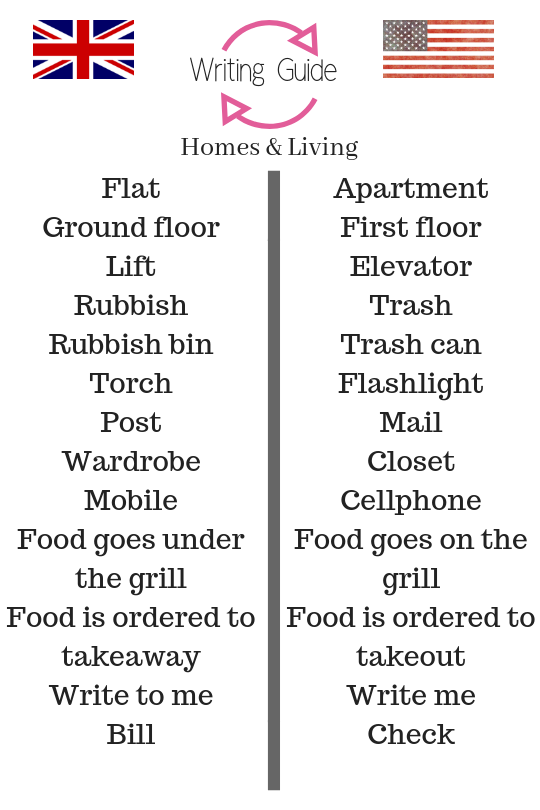
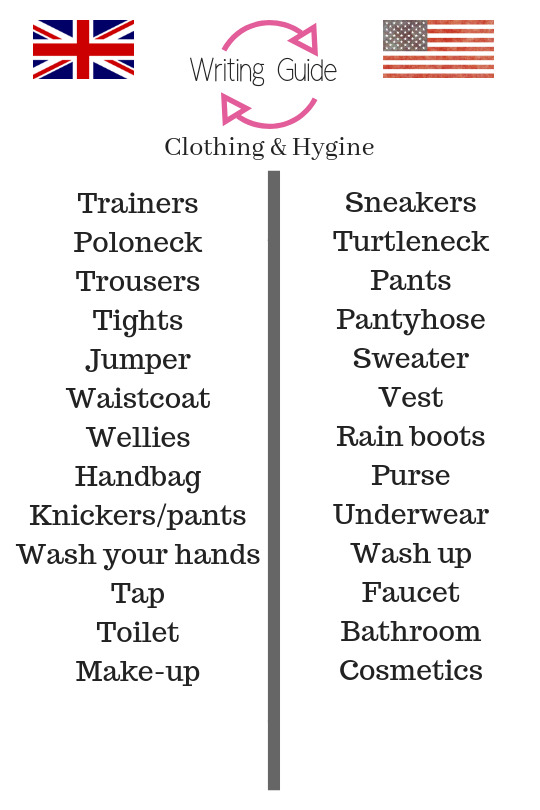

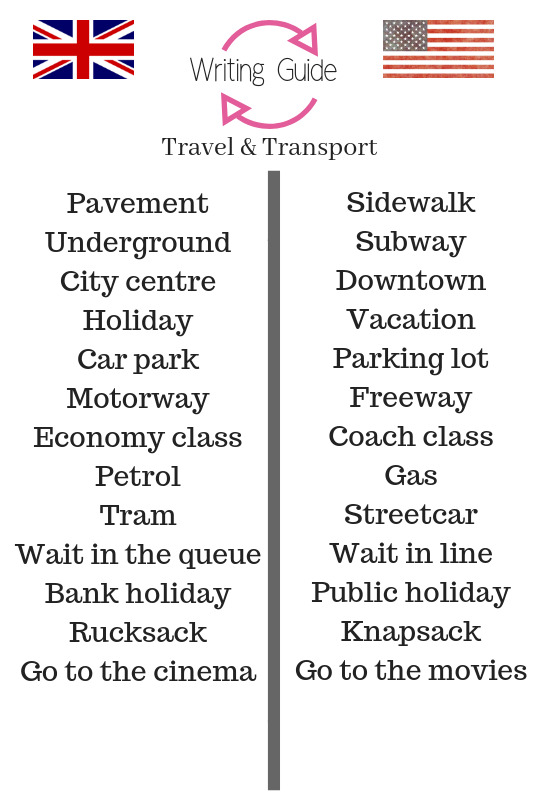
For any of you who are writing ‘across the pond’-here is a little guide I put together of some common differences between British and American English!
90K notes
·
View notes
Text
WRITING EXERCISE WORKSHEETS (vol. 1)
Volume 1 of many in my endless gratitude for everyone’s support!
They are Google Docs meant to be printed or copied (File > Make a Copy) and used for writing exercises. I hope you like them and please please please let me know if you use them and find them helpful! It’s what I live for.
Character Building Questions worksheet
Relationship Interview worksheet
Beta Questionnaire worksheet
(I also made them all by myself and worked really hard on them, so please don’t repost, just reblog this! Thank you!)
3K notes
·
View notes

